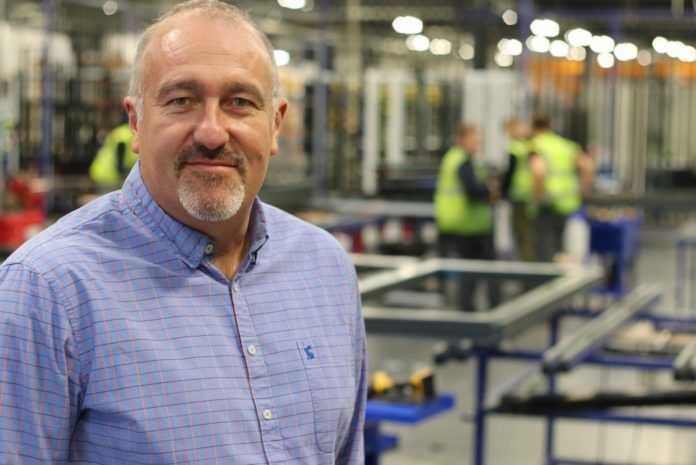
I speak to our installers every day. ‘Exhausted’, ‘stretched’ and ‘frazzled’ probably describe how they feel best.
We’re in a boom. But that’s come with a unique set of challenges. So, to be talking now about price increases and disruption to the supply chain, we recognise it’s the last thing they want to hear about.
As a business, Sternfenster has already seen a series of price increases and surcharges. The communication of some of those increases has been handled better than others. Each, however, ultimately brings us back to the same place – we’re paying more for components.
Glass, PVC-U, hardware and steel have gone up. That puts pressure on our suppliers. They’ve passed those costs onto us, and, ultimately, we will pass those costs onto our customers.
What concerns me is that things are very messy at the moment. We’re not getting one increase to communicate out to our customers, we’re getting several, and then surcharges on top, which are variable and come in with very limited notice. I understand the necessity, but combined, it creates a challenge for everyone, because the limited notice that we’re getting impacts on margin throughout the onward supply chain. We can’t plan effectively for them.
We have done our best to absorb those hits and to give our customers notice but it’s vital now that they, like every other customer of every other fabricator, review their pricing structures and build more margin into their models, so that they remain profitable going forward.
I’ve commented on the importance of this before. If we’re profitable as a fabricator, we can invest, in machinery, in our service and in our support offer – those are things that directly benefit our customers. And I get it – systems, glass, hardware and steel companies have to be profitable too, so that they can do the same.
The success of everyone in achieving that, in investing in being better, is ultimately carried by our customers, as the touchpoint for the whole industry with the end user – installers also need to be profitable. At its simplest, that is reliant on three things: the price they sell at, less what they buy product for from their suppliers, and less their operational overheads.
I can tell you for definite that one of those is changing, so, either installers need to operate at reduced overhead, or increase prices, or their margins are going to go down. Given the pressure on labour, the demand for fitting teams, I’d suggest that the latter represents the least line of resistance.
Price increases are never going to be popular. But I’d argue the price installers pay for product from fabricators should be less of a factor on their bottom line than the price that they sell their service at. There are retailers who do get it right, who charge a fair price for what they do, but in our experience, there are others who have got that financial model wrong and sell on price alone, not their offer.
We need more training and more professionalism at point of retail. We sell a bespoke product – that needs to be reflected in price point in general.
In the current context, where price increases are being fed in from the top of the supply chain, selling effectively at point of retail gives us all a chance of maintaining margin. The end user in most cases has very little understanding of process or price point. Inflating retail prices to reflect new costs of supply is not unreasonable, and, based on my experience, won’t even register with the vast majority of homeowners.
But to emphasise again, the price increases that we’re seeing now, are unlikely to be isolated. More are likely to come, so everyone needs to review their pricing model to reflect them.
Putting this to one side, supply chain stability and the availability of product is something that also concerns me. We are in a stronger position than most: we have partnered with our suppliers for a long time and we pay our bills. That is going to be important in the months ahead.
Companies are likely to prioritise customers who are loyal and who they have an established relationship with. We will do the same. But we should all be braced for some disruption. The more visibility customers can give fabricators of their order books, the better.
It’s also vital that we maintain and manage end user expectations. We need to be honest about lead times at point of retail, and explain why they’re longer than they would normally be. If you’re ordering a new kitchen, lead times are out because of Covid: you have to wait for builders (at least the good ones!) consumers will accept longer lead times, as long as we explain why.
What we’re seeing is the product of multiple factors. Covid-19 has pushed down and disrupted manufacture of component products, ships have got stuck in canals, containers have been in the wrong place and demand for materials is high across sectors. In short, the last 12 months have exposed some fundamental weaknesses in the global supply chain and it will be interesting to see if that leads some companies to bring more sourcing and manufacture back to the UK.
Most fundamentally of all, the pressure on supply is the product of end user demand. That ultimately has to be good, because, as long as we get through the next few months with our business relationships intact, we can be confident about sustained demand through to the end of the year, at the very least.
Mike Parczuk
Managing director, Sternfenster



